|
Education | Celebration |
Clubs and Associations |
Women's Co-operative Guild
Education
The inclusion of a principle on education by the Rochdale Pioneers, and by
the International Co-operative Alliance in its revision of the principles in
1966, demonstrates the importance of education within the co-operative
movement. Amongst the many courses and programmes developed were a series of
studies in the history and principles of co-operation aimed at all members,
from children to adults.
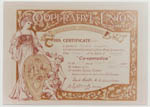
Photograph of certificate issued to Winnie Hughes for attaining
junior grade examination stage one, in the subject of co-operation, on 17
March 1930. [SWCC/MND/137/2/65/25]
Spreading the message and spirit of co-operation was part of the educational
facet of the movement and one which societies took to different levels. For
example, Swansea Co-operative Society undertook to visit every new member to
explain in person the principles, objectives and merits of co-operation.
Other societies, such as the Aberdare Workmen’s Industrial Co-operative
Society, issued their own copies of The Wheatsheaf, a centrally produced
publication, as a means to engage their members and others in the movement.
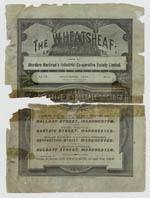
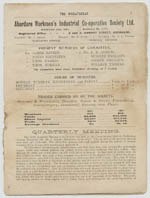
The Wheatsheaf, volume III, number 6, issued by Aberdare
Workmen’s Industrial Co-operative Society in December 1898.
Suggested further reading:
• Co-operative College -
http://www.co-op.ac.uk/
• Co-operative News -
http://www.thenews.coop/
Celebration
The success of the co-operative movement was marked during annual
large-scale events, such as International Co-operative Day, and on various
occasions at a more local level. Society souvenirs and histories were often
published at key events, such as the opening of a new store or when a
significant milestone was reached. Celebrations also included occasions for
members to actively participate in, including processions, carnivals and
performances.
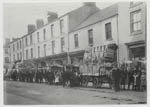
Postcard with image of ‘Jubillee Cwmbach Coop Society June 23.10’.
[SWCC/MND/137/2/1/27]
Clubs and Associations
A healthy competition existed within the co-operative movement and many
societies had sports clubs and other societies. In addition to sporting
competitions co-operative eisteddfods were also organised. Many of the
co-operative choirs were of a particularly high standard, with, for example,
the Mid-Rhondda Co-operative Juvenile Choir appearing on BBC Children’s
Hour.
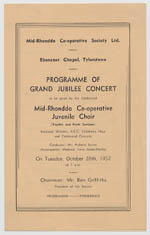
Programme for concert given by ‘the celebrated Mid-Rhondda
Co-operative Juvenile Choir (Ynyshir and Porth Sections) National Winners,
BBC Children’s Hour and Celebrated Concerts’. [SWCC/MND/137/2/42/4]
Women’s Co-operative Guild
The role of women within the co-operative movement is particularly
associated with the Women’s Co-operative Guild. Formed in 1883 this part of
the co-operative movement was involved in charitable work and political and
social education. They campaigned on various issues including those
primarily effecting women, such as divorce laws and women’s suffrage, and
encouraged their members to participate fully in their local co-operative
societies.

Photograph of presentation by the Women’s Co-operative Guild to
the Mayor of Ammanford of dolls to raise money for disadvantaged children in
Ammanford, c1968. [SWCC/MND/137/2/6/11]
Suggested further reading:
• Caring and Sharing: The Centenary History of the Co-operative Women’s
Guild (Manchester, 1983)
• Feminism and the Politics of Working Women: The Women’s Co-operative
Guild, 1880s to the Second World War by Gillian Scott (London, 1988)
• The Woman with the Basket; the History of the Women’s Co-operative Guild,
1883-1927 by Catherine Webb (London, 1927)
|












